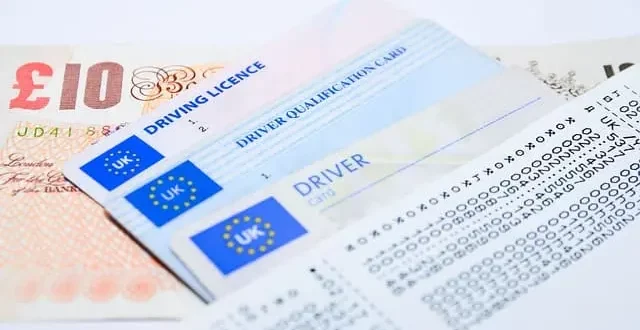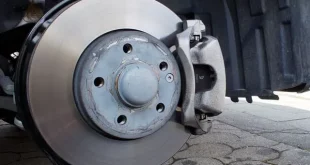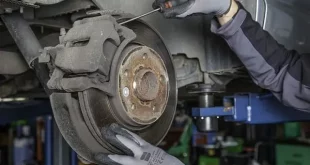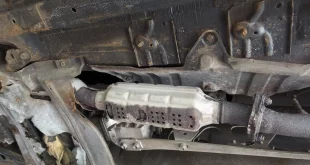Automotive – How long does it take to get a CDL? Obtaining a Commercial Driver’s License (CDL) is a critical step for those aspiring to enter the trucking industry, signifying a driver’s capability to operate heavy commercial vehicles safely and responsibly.
The process and time it takes to get a CDL can vary significantly based on several factors, including the type of license and training program chosen, state-specific requirements, and individual preparation for the exams.
Overview of the Commercial Driver’s License Acquisition Process
- CDL Manual Review: The journey to obtaining a CDL begins with reviewing your state’s CDL manual, which provides essential information on the process, standards, regulations, and requirements specific to your state.
- Commercial Learner’s Permit (CLP): Applying for a CLP is the next step. Similar to a regular driver’s license permit, a CLP allows you to practice driving commercial vehicles on public roads under the supervision of a licensed instructor.
- Entry-Level Driver Training: For those applying for a Class A or B license, completing the FMCSA’s new entry-level driver training requirements is necessary. This training must be done through an FMCSA-approved provider.
- Official CDL Test: The final step involves taking and passing the official CDL test at a state licensing facility, such as a DMV.
What Is The Highest Level of CDL?
The highest level of Commercial Driver’s License (CDL) is the Class A CDL. This classification allows the holder to operate any combination of vehicles with a Gross Combination Weight Rating (GVWR) of 26,001 or more pounds, provided the towed vehicle is heavier than 10,000 pounds. Vehicles that can be operated with a Class A CDL include tractor-trailers, truck and trailer combinations, tanker vehicles, livestock carriers, and flatbeds. Moreover, with the appropriate endorsements, a Class A CDL holder may also drive some Class B and Class C vehicles, expanding their versatility and employability in the trucking industry.
The Class A CDL is distinct from Class B and Class C licenses, which are tailored for different types of vehicles and driving scenarios. Class B CDL is required for operating a single vehicle that isn’t hitched to a trailer and has a GVWR of 26,001 or more pounds, or to tow a vehicle not heavier than 10,000 pounds. This includes straight trucks, large buses, and dump trucks with small trailers. On the other hand, a Class C CDL is necessary for driving vehicles designed to transport 16 or more occupants, including the driver, or to transport hazardous materials, thus requiring specific endorsements for operation.
Obtaining a Class A CDL involves comprehensive training and passing both written and skills tests, reflecting the high level of responsibility and skill required to operate large commercial vehicles safely. This level of CDL offers the widest range of employment opportunities in the trucking industry, from over-the-road (OTR) long hauls to specialized cargo transportation, including hazardous materials and oversized loads. The demand for Class A CDL drivers is consistently high, with many job opportunities available for qualified drivers. Additionally, endorsements for hazardous materials, tank vehicles, and double/triple trailers can further enhance a driver’s qualifications and earning potential.
For those interested in pursuing a career in trucking, understanding the distinctions between the different classes of CDLs and the specific vehicles they are authorized to operate is crucial. The higher level of training and qualifications associated with a Class A CDL is mirrored in the greater earning potential and range of job opportunities available to holders, making it a valuable credential in the transportation industry.
Also Read : How Long Does It Take To Get A CDL In Texas?
Timeframe for Obtaining a CDL
The duration to obtain a CDL can range from 3 weeks to 6 months, with the average being around 7 weeks. This timeframe is influenced by the following factors:
- License Classifications and Endorsements: Different CDL classifications (Class A, B, and C) have different training requirements, with Class A generally requiring the most training time. Special endorsements for transporting hazardous materials, passengers, or operating tank vehicles may also affect the duration due to additional testing requirements.
- State and Training Program Requirements: Each state has its own standards for CDL training, which can influence the length of the program. The schedule, format (part-time, full-time, online, or in-person), and specific curriculum of the training program can also impact how long it takes to complete.
- Individual Preparation and Performance: The amount of time an individual dedicates to studying the CDL manual, practicing driving skills, and preparing for the tests can greatly affect the overall timeframe. Adequate preparation is crucial for passing the knowledge and skills tests required for a CDL.
Also Read : How Long Does It Take to Get a CDL Licence in Florida?
What’s the Fastest I Can Get My CDL?
The fastest route to obtaining a Commercial Driver’s License (CDL) can vary based on several factors, including the type of CDL you’re pursuing, your previous experience, and the method of training you choose. However, a common fast track to getting your CDL involves enrolling in a reputable truck driving school. According to Union Test Prep, attending a reputable truck driving school is the quickest way to acquire a Class A license, potentially within five weeks. The process from starting school to being ready for employment typically takes about eight weeks, accounting for training, testing, and job placement efforts.
Several steps and tips can expedite the CDL acquisition process. For instance, Private Parking highlights the importance of preparing in advance for both the knowledge and road skills exams, getting medical clearances beforehand, and ensuring all your documentation is in order. They also mention the possibility of waiving certain tests if you have relevant military experience or if you already possess the necessary driving skills, thus bypassing the need for CDL school.
Additionally, driving-tests.org outlines the general process and requirements for obtaining a CDL, emphasizing the need to pass a vision exam, a knowledge exam to receive a Commercial Learner’s Permit (CLP), and then a road skills test after holding the CLP for a minimum of 14 days. The specifics, such as the required documentation and medical exams, can vary by state, so it’s crucial to check local regulations.
It’s also worth noting that the timeline to get your CDL can be affected by your readiness and ability to pass the required tests, the scheduling availability for exams, and any additional training or endorsements you may need for your desired CDL class. Preparing thoroughly for each step of the process and choosing the right training program based on your needs and circumstances can help ensure you obtain your CDL as quickly as possible.
Also Read : How Long Does It Take To Get A CDL In Ohio?
What is the Hardest Part of Getting Your CDL?
The hardest part of getting your Commercial Driver’s License (CDL) can vary depending on the individual’s strengths, weaknesses, and background. However, several key challenges are commonly cited across different sources and experiences:
- Road Test: The road test is often considered the hardest part of the CDL process. This is because it not only tests your knowledge but also your practical driving skills in a commercial vehicle. The road test includes a pre-trip vehicle inspection, a skills test to demonstrate your ability to control the vehicle, and a driving test to assess your on-road driving skills.
- Studying and Training: The amount of studying and training required to pass the CDL tests is another significant challenge. Before obtaining a CDL, candidates must go through a rigorous training program, which includes both theoretical knowledge and practical driving skills. The studying part, especially for those who struggle with written tests or do not have a strong academic background, can be quite daunting.
- Adjusting to the Physical Demands: For many new drivers, adjusting to the physical demands of driving a large commercial vehicle can be challenging. This includes mastering skills like double clutching, downshifting, straight backing, properly adjusting the driver’s seat and mirrors, making right-hand turns, starting from a stop on an incline, and parallel parking a large vehicle. These physical tasks can be difficult for newcomers to master and require a significant amount of practice.
- Overcoming Misinformation: A subtle but pervasive challenge is the misinformation and misconceptions about the trucking industry and the CDL process. New drivers often face cognitive challenges and misconceptions about the industry, which can hinder their progress and success. This misinformation can create unnecessary fears and doubts, making it difficult for new drivers to understand what it truly takes to succeed in trucking.
- Regulatory Requirements: There are also regulatory hurdles to clear, including passing medical examinations, submitting required documentation, and meeting age and residency requirements. Each state has its own set of regulations governing the issuance of CDLs, adding another layer of complexity to the process.
In summary, obtaining a CDL requires overcoming both practical and cognitive challenges. Success in this endeavor is not just about passing the tests but also about adapting to the physical demands of driving a commercial vehicle, navigating the regulatory landscape, and filtering through the misinformation about the industry. Proper preparation, training, and a clear understanding of the trucking industry are key to overcoming these challenges and achieving success in obtaining a CDL.
Also Read : How Long Does It Take To Get a CDL in Louisiana?
What Disqualifies You From Getting a CDL?
To qualify for a Commercial Driver’s License (CDL), applicants must meet stringent criteria set by both federal and state guidelines to ensure the safety and reliability of commercial driving operations. Various factors can disqualify an individual from obtaining or retaining a CDL, which are broadly categorized into major offenses, serious traffic violations, railroad-highway grade crossing offenses, and violations of out-of-service orders.
Major offenses include driving under the influence of alcohol or controlled substances (with a Blood Alcohol Content limit of 0.04% for CDL holders, half of the standard 0.08% for non-commercial drivers), refusing to undergo alcohol testing, leaving the scene of an accident, and committing felonies with a commercial motor vehicle (CMV), such as manufacturing or distributing controlled substances. These offenses can lead to disqualification periods ranging from one year to a lifetime ban, with certain conditions allowing for reinstatement after ten years in the case of lifetime bans.
Serious traffic violations include excessive speeding (15 mph or more above the speed limit), reckless driving, improper lane changes, following too closely, and driving a CMV without the appropriate CDL or endorsements. Accumulating multiple convictions for these offenses within a specific timeframe can result in disqualification periods of 60 to 120 days.
Railroad-highway grade crossing violations and failing to comply with out-of-service orders also lead to disqualification. These can range from 60 days for a first offense to one year for subsequent offenses within a three-year period, and significant fines.
Moreover, certain criminal convictions, especially those involving theft, white-collar crimes, and other felonies like arson, smuggling, kidnapping, and manslaughter with a motor vehicle, can also disqualify an individual from obtaining a Commercial Driver’s License. The regulations aim to ensure that CDL holders maintain a high level of responsibility and adherence to safety standards due to the potential risks associated with operating large commercial vehicles.
For more detailed information on specific disqualifications and the legal framework surrounding CDL requirements, refer to the comprehensive resources provided by legal experts and regulatory authorities such as the Federal Motor Carrier Safety Administration (FMCSA) and state-specific guidelines.
Also Read : How Long Does It Take To Get A CDL in Missouri?
Importance of Commercial Driver’s License
Obtaining a CDL is not just about meeting legal requirements; it’s a commitment to safety and professionalism in the trucking industry. The CDL ensures that drivers have the knowledge and skills necessary to operate large vehicles safely, protecting themselves, their cargo, and other road users.
Conclusion
The path to obtaining a Commercial Driver’s License is a comprehensive process designed to ensure that drivers meet the safety and operational standards required for commercial vehicle operation. By understanding the steps involved, the factors affecting the timeframe, and the importance of thorough preparation, prospective commercial drivers can navigate the process more effectively and embark on their careers in the trucking industry with confidence.
For detailed guidance on the CDL acquisition process and requirements, the Federal Motor Carrier Safety Administration (FMCSA) and resources like Union Test Prep offer authoritative and trusted information. (Imaxshift.com)
 Imaxshift.com : Insurance, Finance, Technology & Gadget Blog
Imaxshift.com : Insurance, Finance, Technology & Gadget Blog



